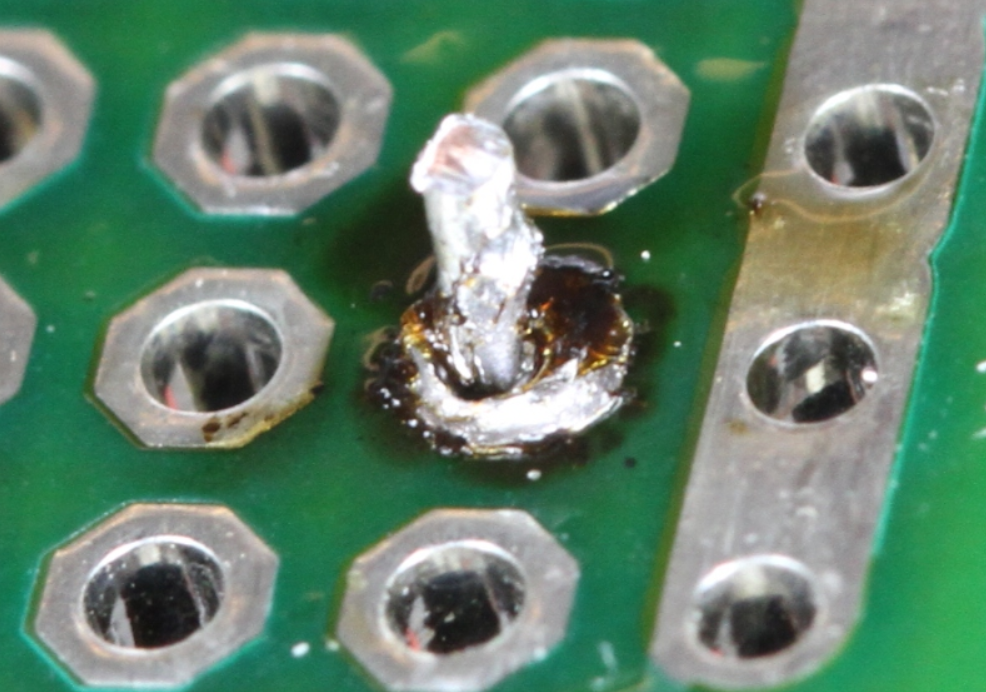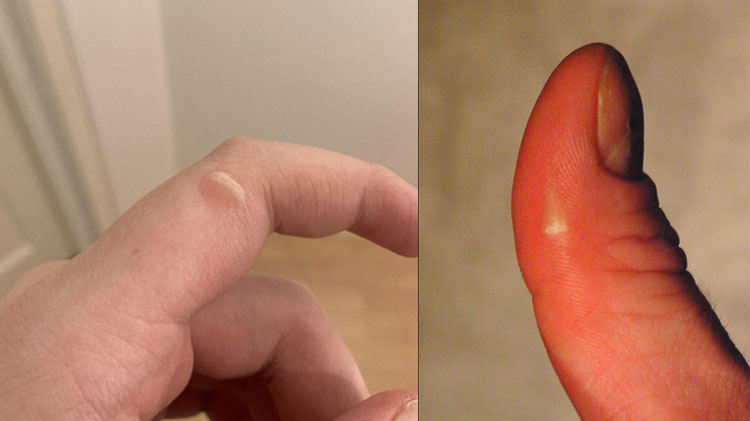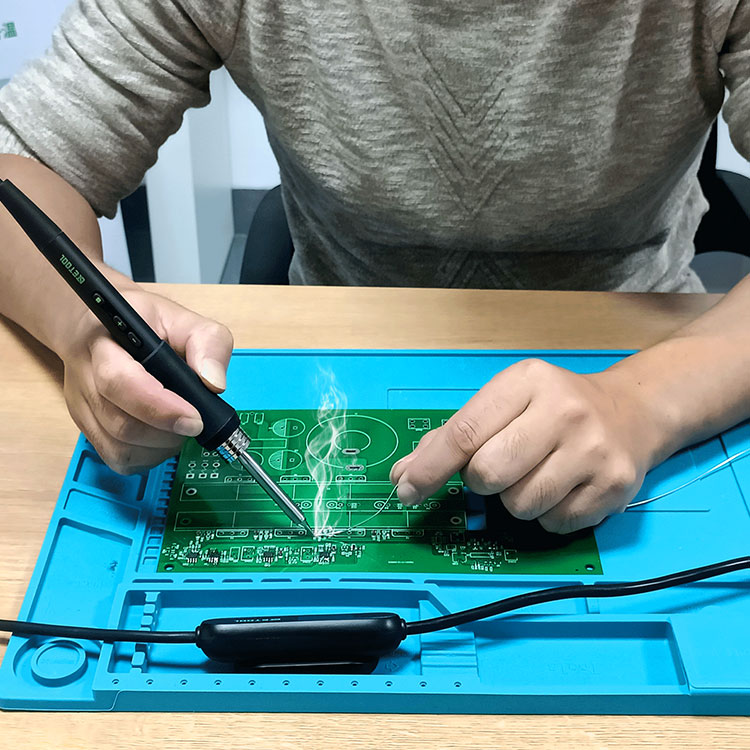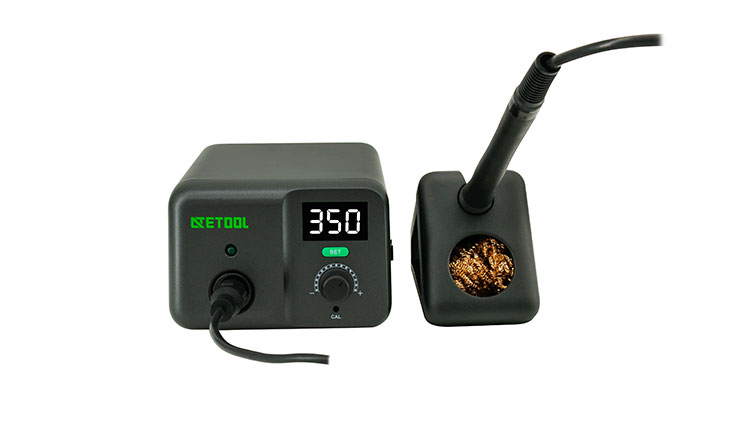Soldering can start a fire if it is not done properly. Soldering involves using a soldering iron, which heats up to high temperatures to melt and apply the solder. If the soldering iron is not used properly, or if it is not handled safely, it can cause a fire.
There are a few ways in which soldering can start a fire, including:
1. Overheating the soldered joint: If the soldered joint is overheated, it can cause the materials to ignite or catch fire. Overheating the soldered joint can also weaken and reduce its strength and durability. To avoid overheating the soldered joint, it is important to use the right temperature and technique for the specific application.

2. Using flammable materials: If flammable materials, such as wood, paper, or cloth, are near the soldering iron, they can catch fire if they come into contact with the heat or sparks of the soldering process. To avoid using flammable materials, it is important to work in a well-ventilated area and to remove any flammable materials from the work area before soldering.
3. Not using a soldering iron stand: If a soldering iron is not placed on a soldering iron stand, it can fall or tip over and cause a fire if it comes into contact with flammable materials. To avoid this, it is important to use a soldering iron stand and to place the soldering iron on the stand when it is not in use.
4. Not following safety guidelines: If the safety guidelines for soldering are not followed, it can increase the risk of fire, and it can cause accidents, injuries, or damage. To avoid this, it is important to read and follow the manufacturer's instructions and use the soldering iron according to the guidelines provided by your employer or safety officer.
Soldering can start a fire if it is not done properly. To avoid this, it is important to use the right temperature and technique, avoid flammable materials, use a soldering iron stand, and follow the safety guidelines for soldering. By following these guidelines, you can prevent soldering from starting a fire and ensure the success and safety of your soldering project.
In addition to the risks of starting a fire, soldering can also present other dangers if it is not done properly. These dangers include:
1. Burns and injuries: If the soldering iron is not handled safely, it can cause burns and injuries to the user or others nearby. To avoid this, it is important to use the soldering iron according to the instructions provided by the manufacturer and to wear protective equipment and clothing, such as gloves, eyewear, and masks.

2. Exposure to hazardous materials: Soldering can expose the user to hazardous materials, such as lead, cadmium, or flux, which can harm the user's health. To avoid this, it is important to use the soldering iron and soldering supplies according to the instructions provided by the manufacturer and to follow the guidelines provided by your employer or safety officer.

3. Damage to the soldered joint: If the soldering iron is not used properly, or if the wrong temperature or technique is used, it can cause damage to the soldered joint, such as warping, cracking, or melting. This can weaken the joint and reduce its strength and durability. To avoid damaging the soldered joint, it is important to use the right temperature and technique for the specific application and to follow the instructions provided by the manufacturer.
In short, soldering can present a variety of dangers, including the risk of starting a fire, burns and injuries, exposure to hazardous materials, and damage to the soldered joint. To avoid these dangers, it is important to use the soldering iron and soldering supplies according to the instructions provided by the manufacturer and to follow the safety guidelines for soldering. By following these guidelines, you can ensure the safety and success of your soldering project.
To avoid the dangers of soldering, it is important to follow some basic safety guidelines, including:
a. Read and follow the instructions provided by the manufacturer: Before using a soldering iron, it is important to read and follow the instructions provided by the manufacturer, as these instructions contain important safety information and guidelines. The instructions will explain how to use the soldering iron properly, how to adjust the temperature and technique, and how to maintain and care for the soldering iron. By reading and following the instructions, you can avoid accidents, injuries, and damage and ensure the success and safety of your soldering project.
b. Use protective equipment and clothing: When soldering, it is important to use protective equipment and clothing, such as gloves, eyewear, and masks, to protect yourself from the heat and sparks of the soldering process. Protective equipment and clothing can prevent burns and injuries and reduce the risk of exposure to hazardous materials. To choose the right protective equipment and clothing, it is important to consult the instructions provided by the manufacturer and to follow the guidelines provided by your employer or safety officer.
c. Work in a well-ventilated area: When soldering, it is important to work in a well-ventilated area, as this can reduce the risk of inhaling harmful fumes and vapours. Soldering can produce fumes and vapours, such as lead, cadmium, or flux, which can harm the user's health if inhaled. To avoid inhaling these fumes and vapours, it is important to work in a well-ventilated area and to use a ventilation system or fan if necessary.
d. Use a soldering iron stand: When soldering, it is important to use a soldering iron stand, as this can prevent the soldering iron from falling or tipping over, and it can reduce the fire risk. A soldering iron stand provides a stable and secure place to rest the soldering iron when it is not in use, and it can prevent the iron from coming into contact with flammable materials. To choose the right soldering iron stand, it is important to consult the instructions provided by the manufacturer and to follow the guidelines provided by your employer or safety officer.

In conclusion, to avoid the dangers of soldering, it is important to follow some basic safety guidelines, including reading and following the instructions provided by the manufacturer, using protective equipment and clothing, working in a well-ventilated area, and using a soldering iron stand. By following these guidelines, you can reduce the risks of soldering and ensure the safety and success of your soldering project.
Contact: Mr. Li
Phone: (0086) 138 24254 321
E-mail: atetool@atetool.com.cn
Add: 5F, 1-2# Building, Tongfuyu Industrial Zone, Aiqun Rd, Shiyan Subdistrict, Bao'an, Shenzhen, 518108, China